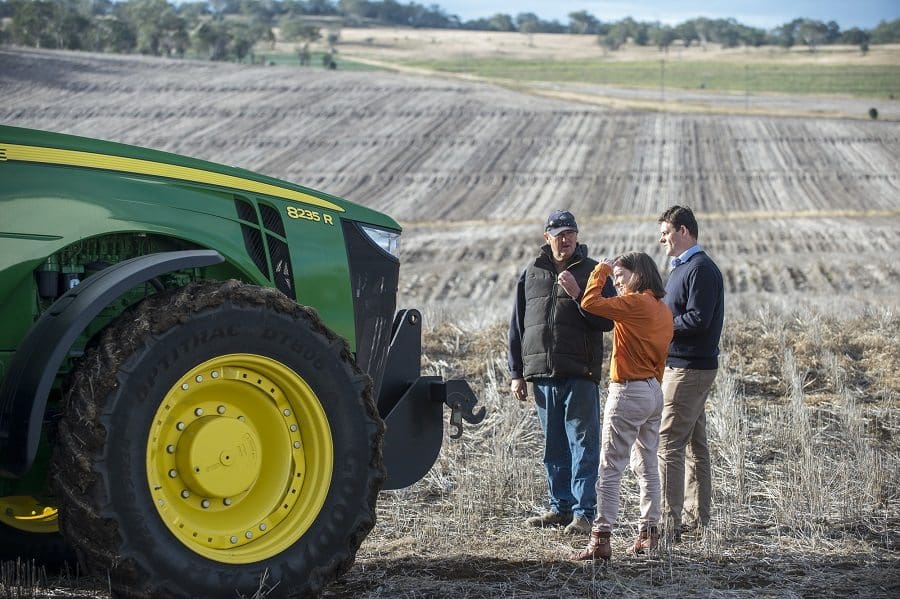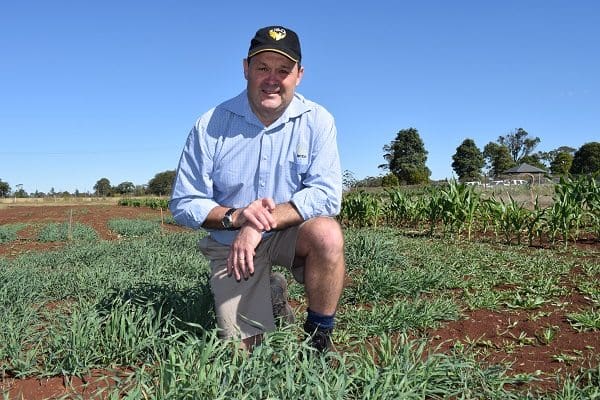FARMERS holding back from adopting high-end weed spraying technology because of its cost and complexity may soon be emboldened to take the first steps to adoption thanks to the development of entry-level options by the University of Southern Queensland (USQ).
USQ senior research fellow, Dr Troy Jensen, said research was well advanced on a Federal Government project aimed at developing options to assist growers make the transition into advanced technologies such as variable rate spraying of weeds.
Dr Jensen said there was a disconnect between what farmers using conventional spraying techniques were doing and those at the pointy end of technology-adoption.
To overcome that, he said the project was exploring options to fill the gap and help ease producers into technologies that offered greater precision and spraying efficiency.
“There is a need to take the people who are using a blanket spraying application who potentially have the technology, but not the inclination, to take the next step. So, we are trying to find something that helps them transition into variable rate spraying,” he said.
“We are looking at entry-level methods. Rather than investing in a precision spot sprayer such as Weedseekers or Weedits which have lots of sensors and a lot invested in technology, the idea is to potentially fly a UAV (drone) over the field, see where the weeds are, come up with a prescription map that can be loaded into base-level sprayers, and go out and do a variable spray regime rather than a blanket spray.
“There is a need to take the people who are using a blanket spraying application who potentially have the technology, but not the inclination, to take the next step.”
“We have been collecting lots of data from UAVs and automating the generation of identifying the weeds. Most people are using guidance to steer the tractor straight. With that, you almost get controlled traffic by default. They are going back to the same traffic lanes each time. That determines what you can do from a variable rate spraying perspective.
“Rather than looking at a field and assuming you have clumps of weeds, we are automating the process of entering the field boundaries and the A-to-B lines so you know where you are going to be spraying. We can then look at the prescription maps that are aligned with the width of the boom and the ability of the sprayer.”
Dr Jensen said the idea was to develop options that utilised existing tractor auto-guidance and conventional boom spray equipment to provide farmers with some form of variable rate application.
“It won’t be turning individual sprays on and off. The technology in the tractors doesn’t have the computing grunt to turn every one on and off. You need greater capacity in the controllers to be able to do that, along with solenoids on each of the valves. That’s the pointy end that has all that,” he said.
“Instead, what we are trying to do is get the guys who are turning their sprayers on as they enter the field, and off as they exit the field, part-way down the track of treating areas in the field differently.
“We have the ability to turn the whole boom on or off, or we are looking at splitting it into thirds with the centre and two wings. Once you try to split it up more than that it becomes more complicated.”
Global partnership
Meanwhile, an ongoing partnership between USQ and farm machinery company, John Deere, is lifting farm productivity, developing the next generation of agricultural technology – including machine automation and control such as driverless tractors.
The partnership, along with investments from both USQ and various funding bodies, is helping provide a gateway for the commercialisation of other technologies to take worldwide related to machine perception and intelligence for applications such as automated weed management systems.
USQ’s Professor Craig Baillie said the global commercialisation strategy was a shining example of researchers working collaboratively with industry to understand problems facing the sector, to determine what new technologies would benefit farmers in the future.
“This research partnership will not only benefit Australian communities but also international industries, which illustrates the global reach and relevance of USQ’s research efforts in agricultural engineering,” he said.
“It also highlights the importance that international organisations are giving to the development of future technologies that will transform agricultural industries over the years to come.
“High tech farming is becoming an everyday tool for primacy producers, therefore, our researchers are consistently looking to improve the profitability, environmental sustainability and socio-economic wellbeing of our rural industries.”

USQ has an ongoing partnership with John Deere to lift farm productivity and developing the next generation of agtech. Pictured: Broadacre farmer John Bryce with USQ researchers, Cheryl McCarthy and Craig Baillie. (Photo: USQ Photography)
Grain Central: Get our free daily cropping news straight to your inbox – Click here


HAVE YOUR SAY